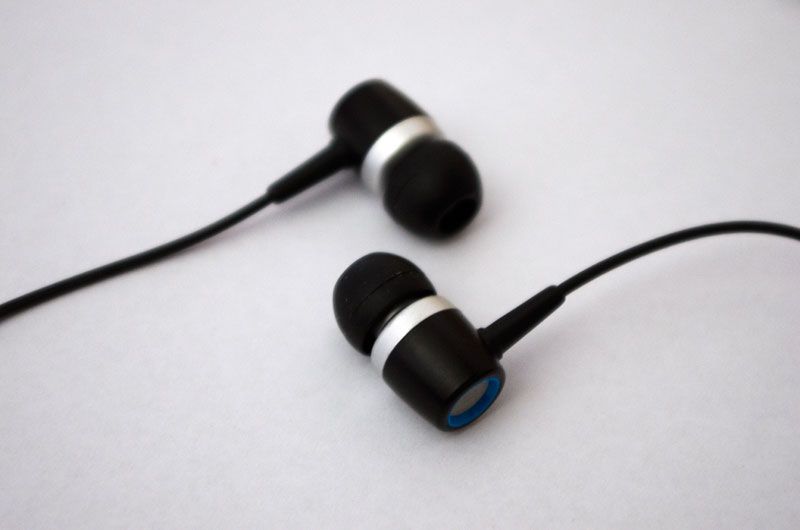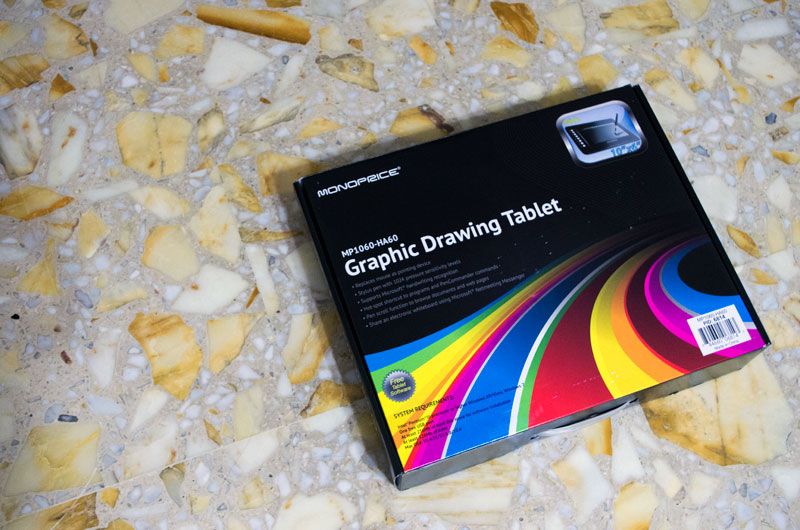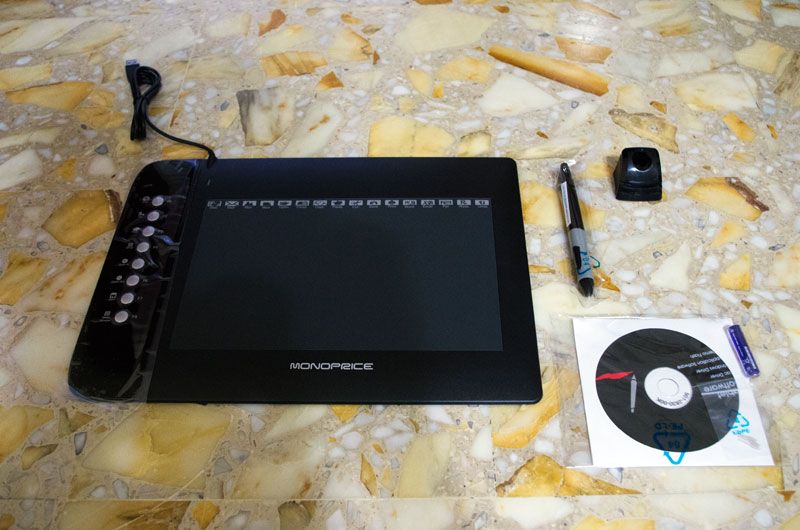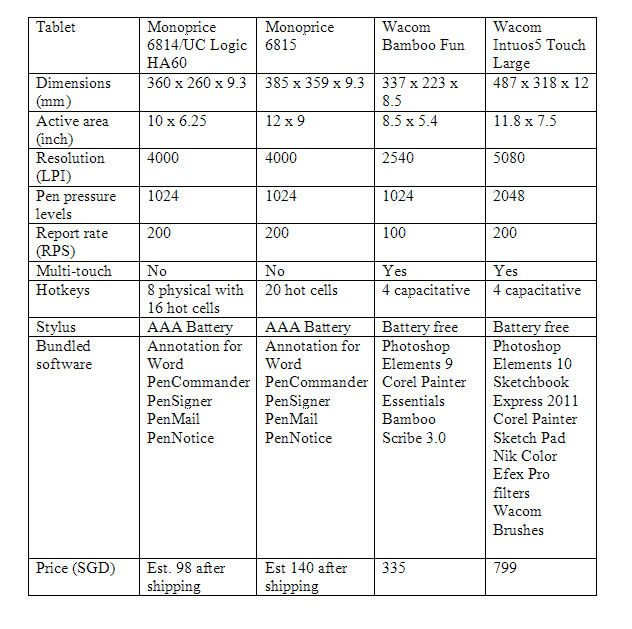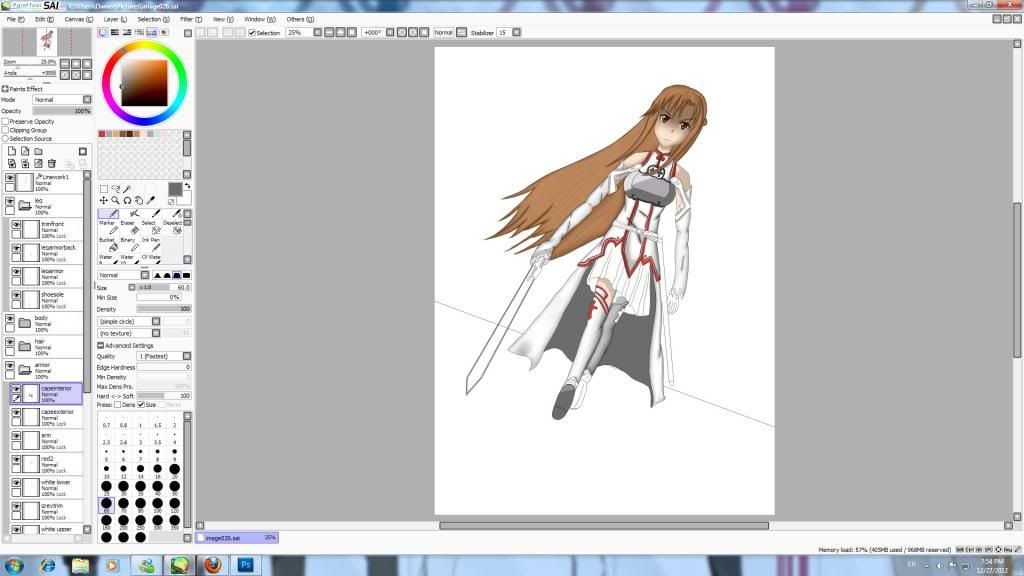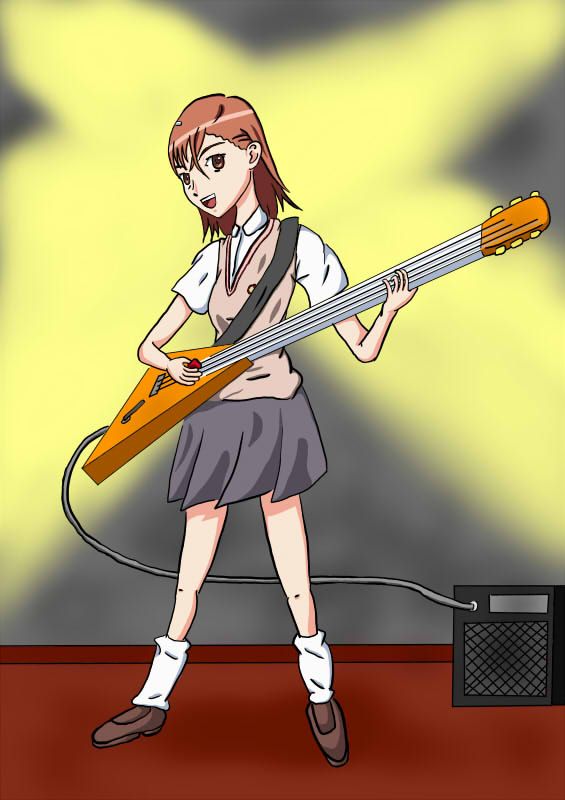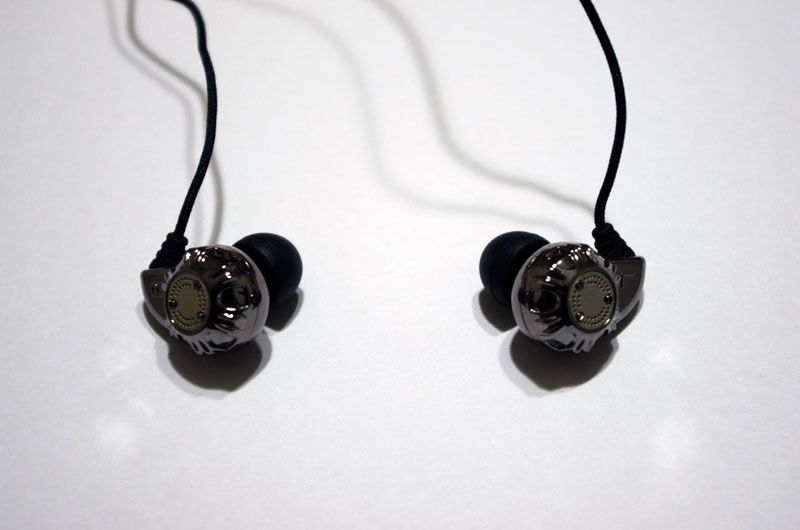Talk about computer audio and one of the topics that come up will be about Creative. This truely Singaporean company revolutionized the computer audio industry with their SoundBlaster sound cards, which remained popular well into the 90s. They are also well known for their ZEN series of MP3 players. Now their Creative Aurvana Live! headphones are known for delivering great sound at an affordable price point, but the Aurvana series of IEMs do not receive much attention.
The Aurvana InEar series all utilize balanced armature drivers. The Creative Aurvana InEar3 is the third model of the lineup, featuring two balanced armature drivers, utilizing dual bore technology (something like what is seen in the UE900) which acts as a mechanical crossover that separates the woofer from the tweeter. Now with so many dual BA IEMs around, can it stand up to the rest of the competition?
The Creative Store at Marina Square is closing down, and so there is a closing down sale, with products like the Creative Gigaworks T3 being priced attractively. Seeing the Creative Aurvana InEar3 fall to a price of 109SGD, I went ahead and got it.
The packaging is really good, in fact it is one of the best I have seen. Despite the extensive use of plastic, it never fails to portray the elegance of the Aurvana InEar 3. The packaging makes the Aurvana InEar 3 look like an art piece rather than part of an audio setup.
The accessories are excellent too. There are 3 pairs of silicone tips, 2 pairs of foam tips, airline adapter, cleaning tool, hardshell case with integrated cable winder, and an acrylic case that can be used to display the Aurvana InEar3 like an art piece.
Build quality is decent, though there are some questionable areas. The shells are glossy and made of plastic, and I wonder whether the gloss of the InEar 3 will hold up over time. The design itself seems to remind one of the Shure SE535. The strain reliefs are actually really soft and flexible, in fact the most flexible I have ever seen. The wires are soft but a little too thin, which does not really give one confidence when it comes to the durability of the wires itself.
Comfort is very good due to the over the ear design like the BA200. With rounded housings and soft cables, it would feel comfortable in most ears. However, its large shells may be uncomfortable in smaller ears compared to say, the BA200.
Unlike most Dual BAs which utilizes a passive crossover, Creative seems to be using their dual bore technology to act as a mechanical crossover. So how does their earphones sound? Let us find out.
Bass is accurate and controlled. It is tight, punchy and has good texture to it. It is not particularly prominent though with the forward midrange. Also, it tends to roll off slightly at the lower end, causing it to have less of a subwoofer feel compared to say, a Klipsch X10.
The mids are very smooth and thick. They are also forward, giving the InEar 3 a mid-centric signature. Comparing with the BA200, the BA200 has a thinner note presentation and a less forward midrange. At the same time the BA200 carries a bit more detail compared to the InEar 3. The InEar 3 has a thicker, creamier midrange that is extremely smooth. Those looking for a monitor-like signature might find themselves craving for a little more detail.
The treble is very laid back, even more so than the BA200. This makes it a very non-fatiguing IEM. Also, there is no harshness or sibilance present, making it an enjoyable listen for long hours. However, compared to other IEMs with crisper top ends, like the TF10 or Quadbeat Pro for example, the Aurvana InEar 3 seems veiled. This is also due to the attention grabbing midrange, which results in the treble being less focused on.
The presentation is good for its signature. While not particularly out of the head like the Quadbeat Pro, it has good layering and separation. However, compared to other models like the BA200, it feels less airy due to the lower treble presence.
With regard to efficiency, I find this one of the most efficient IEMs I ever have. It is really meant to be powered by portable players. With my iPod Nano 7G, I can run it at 4 volume notches lower than my BA200. Thus people who purchase the InEar 3 need not worry about their players being unable to power the IEM to sufficient volume levels.
The Creative Aurvana InEar3 is a great monitor that can be mistaken as part of the Shure lineup. At the current street prices, it is one of the cheapest dual BAs around. I can see it as an introductory IEM to the world of balanced armatures, and a good introduction to the Shure lineup. While not very impressive at first listen, its smooth and inoffensive signature makes for an enjoyable listening experience.
Look Back And Reflect
Monday, September 16, 2013
Sunday, September 15, 2013
[Review] LG Quadbeat Pro
Being one of the two electronic giants and one of the economic forces of Korea, LG seems to make about everything, from TVs and Home Theatre systems to Fridges and Washing Machines. Personally my own home is flooded with LG electronic goods, having a 55 inch LG 3D Smart TV, a LG Soundbar, a LG Blu-Ray system, a LG fridge and a LG washing machine. The newest addition to the "LG family" would be my new phone, the LG Optimus G Pro (which I might probably review later on).
Now, while they are a major electronics maker in the world, they have little to no presence in the world of portable audio, unlike Sony, JVC, Panasonic and Philips, which have some amazing IEMs in their line ups.That is, until the Quadbeat Pro is released.
The Quadbeat Pro set the audio world in Korea by storm, so popular that it can be found as a standalone instead of being bundled with the Optimus G or Optimus G Pro. Some considered it to even be as good as the UE TripleFi 10, or even better. Could this be the giant killer from Korea? We will find out here.
From Amazon it seems like it sells at around the street price of 22USD, which is pretty affordable for a smartphone use IEM. For me, I got it for free since I bought a new LG Optimus G Pro, which had it included as the stock earphones.
Packaging is pretty nice if you get it as a standalone product. It is displayed in nice plastic packaging, though it isn't exactly eco-friendly. For those bundled with phone, they are packed in the much more economical plastic bag.
Same can't be said for the accessories though, as they provided only two pairs of single flanges and a pair of bi-flanges. While these tips are comfortable, they are a bit too soft and they might "collapse" with some force.
Build quality is very good. Aluminum housings are a big welcome in the area of durability and style, especially in smartphone use IEMs where they tend to get trashed around easily. Flat cables are great too, they seem tough but not too thick, making it better for over the ear wear. One bummer though is that there is a lack of strain relief, so one still has to be careful when handling the IEMs.
Comfort for me is decent, though not at the level of the BA200 which has excellent ergonomic shells. Those with smaller ears might find the LG Quadbeat Pro a little uncomfortable though. Isolation is not bad, but not good either. I would say it would be about the same level as the GR99. While pretty useless in flight, it would be pretty good for street use.
Now on to sound quality, which is what the hype is all about. Does it live up to its hype then?
For evaluation, I used the output from both my iPod Nano 7G and my LG Optimus G Pro, since I don't think people will actually spend on a portable amplifier for this. At the same time, a portable amplifier is pretty useless since the LG Quadbeat Pro has a built in microphone with volume control.
Bass is present in good quantity but not excessive. It is well extended, with a little boost at the mid-bass. It doesn't give the subwoofer feel of the VSonic GR99, and I feel it is closer to the TDK BA200 in the bass department. While it feels faster than the GR99, the speed cannot match up to the dual balanced armatures of the TDK. Overall, the bass is clean and pretty well controlled.
Mids are pretty clear on the Quadbeat Pros. While it does have a little bass bleed, it is relatively less than the GR99. It carries plenty of detail, more than the GR99 does and in my opinion, at the same level or slightly better than the Monoprice 8320.
The treble area has a good amount of energy, and probably the most energetic IEM that I have thus far. While not sibilant, it contains more energy in the lower treble, which makes it a little more harsh compared to the smooth BA200s. However, I find it is still quite fatigue free and good enough for a few hours of music.
Soundstage is pretty good on the Quadbeat Pros. It is wide and relatively uncongested, with great separation and imaging. It gives a greater out of the head feel than the Dunu Ares and the VSonic GR99.
I can see why it is compared to the UE TripleFi 10. Both has a slight v-shaped sound signatures, with a wide and open soundstage expected from the type of sound signature they share. So is the LG Quadbeat Pro better than the TF10? While I have not listened to the TF10 for a very long time, I still feel that the TF10 has slightly speed and clarity next to the LG Quadbeat Pro. So my answer to this is, not exactly so.
Don't get me wrong, it is not a bad IEM, it is just slightly overhyped. However, that would not stop me from wholeheartedly recommending the LG Quadbeat Pros. At 22USD, it is a great offer and one of the best value around. For people who are looking for a smartphone use IEM, this could be the one for you, along with the Sony MH1. For LG Optimus G and LG Optimus G Pro users, rejoice; you have a really good pair of IEMs provided for you for free. However, this means you need to spend more to notice the difference in sound quality compared to other stock earphones. I am not sure whether it is a good or a bad thing though.
Now, while they are a major electronics maker in the world, they have little to no presence in the world of portable audio, unlike Sony, JVC, Panasonic and Philips, which have some amazing IEMs in their line ups.That is, until the Quadbeat Pro is released.
The Quadbeat Pro set the audio world in Korea by storm, so popular that it can be found as a standalone instead of being bundled with the Optimus G or Optimus G Pro. Some considered it to even be as good as the UE TripleFi 10, or even better. Could this be the giant killer from Korea? We will find out here.
From Amazon it seems like it sells at around the street price of 22USD, which is pretty affordable for a smartphone use IEM. For me, I got it for free since I bought a new LG Optimus G Pro, which had it included as the stock earphones.
Packaging is pretty nice if you get it as a standalone product. It is displayed in nice plastic packaging, though it isn't exactly eco-friendly. For those bundled with phone, they are packed in the much more economical plastic bag.
Same can't be said for the accessories though, as they provided only two pairs of single flanges and a pair of bi-flanges. While these tips are comfortable, they are a bit too soft and they might "collapse" with some force.
Build quality is very good. Aluminum housings are a big welcome in the area of durability and style, especially in smartphone use IEMs where they tend to get trashed around easily. Flat cables are great too, they seem tough but not too thick, making it better for over the ear wear. One bummer though is that there is a lack of strain relief, so one still has to be careful when handling the IEMs.
Comfort for me is decent, though not at the level of the BA200 which has excellent ergonomic shells. Those with smaller ears might find the LG Quadbeat Pro a little uncomfortable though. Isolation is not bad, but not good either. I would say it would be about the same level as the GR99. While pretty useless in flight, it would be pretty good for street use.
Now on to sound quality, which is what the hype is all about. Does it live up to its hype then?
For evaluation, I used the output from both my iPod Nano 7G and my LG Optimus G Pro, since I don't think people will actually spend on a portable amplifier for this. At the same time, a portable amplifier is pretty useless since the LG Quadbeat Pro has a built in microphone with volume control.
Bass is present in good quantity but not excessive. It is well extended, with a little boost at the mid-bass. It doesn't give the subwoofer feel of the VSonic GR99, and I feel it is closer to the TDK BA200 in the bass department. While it feels faster than the GR99, the speed cannot match up to the dual balanced armatures of the TDK. Overall, the bass is clean and pretty well controlled.
Mids are pretty clear on the Quadbeat Pros. While it does have a little bass bleed, it is relatively less than the GR99. It carries plenty of detail, more than the GR99 does and in my opinion, at the same level or slightly better than the Monoprice 8320.
The treble area has a good amount of energy, and probably the most energetic IEM that I have thus far. While not sibilant, it contains more energy in the lower treble, which makes it a little more harsh compared to the smooth BA200s. However, I find it is still quite fatigue free and good enough for a few hours of music.
Soundstage is pretty good on the Quadbeat Pros. It is wide and relatively uncongested, with great separation and imaging. It gives a greater out of the head feel than the Dunu Ares and the VSonic GR99.
I can see why it is compared to the UE TripleFi 10. Both has a slight v-shaped sound signatures, with a wide and open soundstage expected from the type of sound signature they share. So is the LG Quadbeat Pro better than the TF10? While I have not listened to the TF10 for a very long time, I still feel that the TF10 has slightly speed and clarity next to the LG Quadbeat Pro. So my answer to this is, not exactly so.
Don't get me wrong, it is not a bad IEM, it is just slightly overhyped. However, that would not stop me from wholeheartedly recommending the LG Quadbeat Pros. At 22USD, it is a great offer and one of the best value around. For people who are looking for a smartphone use IEM, this could be the one for you, along with the Sony MH1. For LG Optimus G and LG Optimus G Pro users, rejoice; you have a really good pair of IEMs provided for you for free. However, this means you need to spend more to notice the difference in sound quality compared to other stock earphones. I am not sure whether it is a good or a bad thing though.
Thursday, April 18, 2013
[Review] VSonic GR99
IEM manufacturers have been making a great impact in the audiophile market in recent years. Fiio has launched a series of portable amplifiers which proved to be a hot seller. HiFiMan launched many great IEMs, which include the hugely popular RE0 and RE-Zero. Unique Melody launched what could be considered one of the best custom IEMs ever made: The UM Miracle. Soundmagic broke new ground in the budget market with the Soundmagic E10 and E30. Now we will move on to VSonic. Their release in 2011, the VSonic GR07, caught the audiophile world by storm, with sound quality that can compete with some of the top tier universals. I have listened to the VSonic GR07 MKII and I was pretty impressed with it. The budget market has not been forgotten though, and VSonic has launched what is probably the most affordable IEM in the lineup, the VSonic GR99. Can it stand up to its competitors in the crowded budget segment?
It costs about 35SGD, which is pretty affordable. In addition, delivery from the site I bought is free. The packaging is pretty well done. It has a certain class to it, making it more expensive than it seems.
Accessories for this price is actually excellent. In the box, you get 1 pair of silicone tips, 7 pairs of fake Sony Hybrid tips, a shirt clip and a pouch. I believe this is adequate for most needs.
Build quality is very good for the price. The shells are full aluminum, with the silver section being brushed aluminum. They feel rock solid and looks like it can take some abuse. The jack is pretty solid as well. Strain relief is substantial, and the left side has a bump to help identify the left and right channels. One thing that is not as good is the y-split. It is pretty simple, but being too simple makes it worrying as it seems to be the weakest link in the IEM. In addition, there is no cable cinch. However, overall the build quality is actually pretty good.
Isolation is average at best as it is a vented dynamic, with massive vents at the back of the IEM. I believe it is useful in the streets but not so much on a flight, though still pretty useable.
Comfort is very good, wearing down is easy due to the straight housings, but I suggest wearing over the ear, which is also just as good. Microphonics is tolerable when worn down but disappears when worn over the ear.
The VSonic GR99 is meant to target at general consumers. However, does it meet the mark when it comes to sound quality? My take is, yes, and then some.
The low end is tight and controlled, but not the most controlled of the lot, though good considering the price. It runs really deep, giving a good rumble at the sub-bass area. Bass impact is very strong, in fact it can match up to the Soundmagic E10 when it comes to impact.
Mids are surprisingly not as recessed as people would think. In fact it is positioned very nicely, making presentation a tad more natural. Resolution is good for the price, but does lag behind slightly from higher priced offerings like its sibling, the VSonic GR02, or maybe even the Monoprice 8320. Vocals do sound good on the GR99, though a tad on the warmer side due to slight bass bleed. Overall, considering the sound signature, I think the mids are actually very good.
Treble is surprisingly smooth, with no sibilance and harshness, unlike its higher priced brethren. The sound signature is enjoyable and is great for long listening sessions.
Soundstage is very good for the price as well. It has a sound stage slightly above average in size, with decent amount of air. Separation of instruments is good and it has a good sense of width and depth. All in all, the presentation works very well for the sound signature of the GR99.
In conclusion, the GR99 is an excellent IEM for its price and as a consumer product, with sound quality to match its style. In addition, it gets bonus points for having a good set of accessories and solid build quality. As a total package, it is a solid recommendation at its price range and works really well as a gift for family and friends, and probably yourself, too.
It costs about 35SGD, which is pretty affordable. In addition, delivery from the site I bought is free. The packaging is pretty well done. It has a certain class to it, making it more expensive than it seems.
Accessories for this price is actually excellent. In the box, you get 1 pair of silicone tips, 7 pairs of fake Sony Hybrid tips, a shirt clip and a pouch. I believe this is adequate for most needs.
Build quality is very good for the price. The shells are full aluminum, with the silver section being brushed aluminum. They feel rock solid and looks like it can take some abuse. The jack is pretty solid as well. Strain relief is substantial, and the left side has a bump to help identify the left and right channels. One thing that is not as good is the y-split. It is pretty simple, but being too simple makes it worrying as it seems to be the weakest link in the IEM. In addition, there is no cable cinch. However, overall the build quality is actually pretty good.
Isolation is average at best as it is a vented dynamic, with massive vents at the back of the IEM. I believe it is useful in the streets but not so much on a flight, though still pretty useable.
Comfort is very good, wearing down is easy due to the straight housings, but I suggest wearing over the ear, which is also just as good. Microphonics is tolerable when worn down but disappears when worn over the ear.
The VSonic GR99 is meant to target at general consumers. However, does it meet the mark when it comes to sound quality? My take is, yes, and then some.
The low end is tight and controlled, but not the most controlled of the lot, though good considering the price. It runs really deep, giving a good rumble at the sub-bass area. Bass impact is very strong, in fact it can match up to the Soundmagic E10 when it comes to impact.
Mids are surprisingly not as recessed as people would think. In fact it is positioned very nicely, making presentation a tad more natural. Resolution is good for the price, but does lag behind slightly from higher priced offerings like its sibling, the VSonic GR02, or maybe even the Monoprice 8320. Vocals do sound good on the GR99, though a tad on the warmer side due to slight bass bleed. Overall, considering the sound signature, I think the mids are actually very good.
Treble is surprisingly smooth, with no sibilance and harshness, unlike its higher priced brethren. The sound signature is enjoyable and is great for long listening sessions.
Soundstage is very good for the price as well. It has a sound stage slightly above average in size, with decent amount of air. Separation of instruments is good and it has a good sense of width and depth. All in all, the presentation works very well for the sound signature of the GR99.
In conclusion, the GR99 is an excellent IEM for its price and as a consumer product, with sound quality to match its style. In addition, it gets bonus points for having a good set of accessories and solid build quality. As a total package, it is a solid recommendation at its price range and works really well as a gift for family and friends, and probably yourself, too.
Monday, March 11, 2013
[Review] Monoprice 8614 Graphic Tablet
Think about a graphics tablet, and the first thing you think about, is a
Wacom. Wacom is currently the leading manufacturer of graphics tablets
for personal and industrial use, with over 85% of the world market share
(about the same percentage as the number of Windows users in the
world), making it almost a virtual monopoly. This gives very little
space for other brands (which uses AAA batteries instead of the
battery-less design of Wacom) to compete (for example UC-Logic, Hanvon
and Genius).
Now let us bring our attention to the company Monoprice. To many online shoppers, the name Monoprice would be familiar. To TV owners and videophiles, they are known to carry cheap yet high quality HDMI and optical cables. To audiophiles, the Monoprice 8320 and 8323 are known to offer great sound for a budget price. However, few people are aware that Monoprice actually offers their own line up of graphics tablets, from the small yet powerful 4” x 3” to the mammoth 12” x 9” graphics tablet.
Today’s review is going to cover the Monoprice 10” x 6.25” graphics tablet. There are two versions of it, one with hot keys (Monoprice 6814) and one without (6251). This review will cover the one with hot keys. At the same time I will cover the Monoprice stylus you can buy separately in the website.
The Monoprice 6814 comes in a pretty large box with a handle. The box is approximately the size of what you get in the Wacom Bamboo Fun or Wacom Intuos5 Small. The box looks pretty professional, though not packaged at the level of the Intuos5 or even the Bamboo Fun.
Inside the box, you will find the Monprice 6814 (which almost fills the box), a graphics stylus, an AAA battery, a pen stand with nib remover, the instruction manual, the driver CD and a pack of replacement nibs. Pretty basic, but all the essentials are inside.
The Monoprice 6814 itself is pretty large, with dimensions close to a 14.1 inch laptop, but much slimmer. The tablet is mostly plastic at the top, and metal at the bottom. The design of this tablet is definitely less attractive than the Bamboo but not that it matters anyway. The active surface area is pretty large, about 1.5 times the size of an average manga or translated light novel. 8 buttons run down the side which allows for various functions such as zooming, copying and pasting. On top are also various hot cells which can be configured to run your desired programs. All this makes this graphics tablet great for daily use.
The stylus is pretty long at more than 6 inches long. It does not have an eraser at the top, and it runs on an AAA battery, which makes it heavier than the Wacom stylus, which is battery-free. The design, while looking like the one used by the Wacom, does feel pretty cheap. However, despite the cheap looks, this stylus looks durable and should be able to withstand the daily rigours of digital painting.
The pen holder is pretty nicely designed. The pen stands upright (pretty much like fountain pens) when not in use. There is a good weight to it, which prevents it from toppling over easily. At the bottom, there is a nib remover which allows you to change nibs when it wears out.
Before plugging in the tablet, the instructions in the box warns you to install the graphics tablet driver first. Installing the driver is pretty straightforward, and after restarting, the process is completed and you are ready to go.
The Monoprice 6814 uses a UC-logic digitizer, which are active digitizers. This means that the stylus runs on batteries and the batteries need to be replaced when they go flat. However, throughout the weeks that I have heavily utilized the stylus, I do not see the need to change the battery yet and it seems the battery will not run out very soon.
Specifications wise, the Monoprice 6814 is approximately in between that of the Bamboo Fun and the Intuos5. It has 1024 pressure levels, which is the same as that of the Bamboo Fun. It also has a reporting rate of 200RPS, which is on par with the Intuos5. Below shows a comparison between the largest tablets of the series and the Monoprice 6814 (along with the 12” x 9” Monoprice 6815)
From the above table it can be seen that the Monoprice tablet slots in between the Intuos5 and Bamboo Fun in terms of specifications. However, the price difference between the Bamboo Fun and 6814 is great at more than 3 times the price.
Now we will move on to the most important part of the tablet, the performance. Is it an Intuos5 beater? Nope, but it does well in certain areas and may even exceed the Bamboo Fun in certain aspects.
The first program that it is tested on is the industry standard of photo editing, Photoshop. A few days of testing shows that it functions really well in Photoshop. Pressure sensitivity is accurate and pressure opacity works. The degree of accuracy of pressure sensitivity is not as refined as say, the Intuos5, but it is more than enough for hobbyists, and definitely as good as the Bamboo Fun. There is no eraser on the stylus, but no big issue since many artists do not really care for the less accurate eraser. The Monoprice tablet actually has less jitter due to the active digitizer. While my lines do look like there are accuracy issues with the tablet, there truly isn’t. It is just my limited and mediocre drawing skills limiting the tablet. Below shows what I can do with the tablet on photoshop (lineart).
The second program I tried on is Paint Tool SAI, which the preferred program for manga fan artists (like me). Paint Tool SAI is light in weight and consumes fewer resources, making drawing a much smoother experience. Pressure works perfect on SAI, and drawing is a breeze. Jitter is almost non-existent and accuracy is spot on due to the higher resolution.
(Pardon my poor artwork)
Artweaver is a free painting program with some pretty neat photo editing features. There is a paid one (which should cost about the same or slightly more than Paint Tool SAI), but the free one is so packed with features it is enough for most artists. The tablet works very well on ArtWeaver. Pressure sensitivity is very accurate and reactive, making it good for line work and colour work.
GIMP (2.8.2) has issues with the graphics tablet, unfortunately. Actually, GIMP 2.8.2 has issues with ALL other brands except Wacom (what kind of favourtism is this GIMP). Many Monoprice, Genius and UC Logic users are having issues with GIMP 2.8.2. I went back to version 2.6 of GIMP and it does work, and very well indeed. Pressure sensitivity is good, accuracy is very good as well. In the past, there are issues with dual monitors in GIMP, but the issues have been fixed with a new updated driver (provided in the CD). For those who are using anything other than Wacom, either switch back to 2.6 or pressure GIMP to fix the tablet issue.
I tried the tablet with myPaint but it does not work as well. Apparently, it supports Wacom tablets properly only. On the Monoprice, there is no pressure sensitivity, and when the program is run the second time, it shows issues that look similar to the one in GIMP 2.8.2.
On the other hand, it works really well on the freeware program Pixia/Pirenha. While Pirenha does have is own issues like poor refresh rate (due to the not-so-good coding) the pressure sensitivity works very well, and it makes it great for drawing lineart and such.
Pardon my noob artwork, but below shows what the monoprice can do.
There is an alternative stylus sold in Monoprice that costs about 8USD before shipping. If you need a spare or do not like the stylus, you should buy this one. It comes with a battery, replacement nibs and nib remover. While it is slightly shorter than the one bundled with the Monoprice tablet, it is slightly heavier. The buttons are recessed and flush nicely with the grip of the tablet. In my opinion, I like the weight distribution of the alternative tablet better, and therefore I use it more often than the stock tablet provided.
All in all, this pen is a step up from the provided one (and even the Wacom in my opinion) in terms of looks, feel and build quality. Though the build quality of battery compartment feels questionable, but does not matter since one does not open it often. I believe that if you do not like the stock stylus, you can actually love this one.
Battery life for both stylus is rated at 4 weeks. I have used this tablet for about 2 months (mostly doing fanart and browsing) and I have yet to replace the battery. Yes, for Wacoms you do not need to think about replacing batteries, but in my opinion, with this long battery life, I don't think it is a big issue as long as jitter is well controlled.
At below 100 after shipping, it is cheaper than the cheapest Wacom in the line up, the Wacom Bamboo Pen (which costs about 135SGD MSRP). Being larger (size is considered large if it was in the Wacom lineup), more accurate and having less jitter, it is a great performer for a sub-100 tablet. While there are some issues with certain programs (GIMP 2.8 and myPaint), it will not stop me from recommending the Monoprice tablet over the Wacom Bamboo Pen as the tablet for beginners, hobbyists and probably even professionals as well.
Now let us bring our attention to the company Monoprice. To many online shoppers, the name Monoprice would be familiar. To TV owners and videophiles, they are known to carry cheap yet high quality HDMI and optical cables. To audiophiles, the Monoprice 8320 and 8323 are known to offer great sound for a budget price. However, few people are aware that Monoprice actually offers their own line up of graphics tablets, from the small yet powerful 4” x 3” to the mammoth 12” x 9” graphics tablet.
Today’s review is going to cover the Monoprice 10” x 6.25” graphics tablet. There are two versions of it, one with hot keys (Monoprice 6814) and one without (6251). This review will cover the one with hot keys. At the same time I will cover the Monoprice stylus you can buy separately in the website.
The Monoprice 6814 comes in a pretty large box with a handle. The box is approximately the size of what you get in the Wacom Bamboo Fun or Wacom Intuos5 Small. The box looks pretty professional, though not packaged at the level of the Intuos5 or even the Bamboo Fun.
Inside the box, you will find the Monprice 6814 (which almost fills the box), a graphics stylus, an AAA battery, a pen stand with nib remover, the instruction manual, the driver CD and a pack of replacement nibs. Pretty basic, but all the essentials are inside.
The Monoprice 6814 itself is pretty large, with dimensions close to a 14.1 inch laptop, but much slimmer. The tablet is mostly plastic at the top, and metal at the bottom. The design of this tablet is definitely less attractive than the Bamboo but not that it matters anyway. The active surface area is pretty large, about 1.5 times the size of an average manga or translated light novel. 8 buttons run down the side which allows for various functions such as zooming, copying and pasting. On top are also various hot cells which can be configured to run your desired programs. All this makes this graphics tablet great for daily use.
The stylus is pretty long at more than 6 inches long. It does not have an eraser at the top, and it runs on an AAA battery, which makes it heavier than the Wacom stylus, which is battery-free. The design, while looking like the one used by the Wacom, does feel pretty cheap. However, despite the cheap looks, this stylus looks durable and should be able to withstand the daily rigours of digital painting.
The pen holder is pretty nicely designed. The pen stands upright (pretty much like fountain pens) when not in use. There is a good weight to it, which prevents it from toppling over easily. At the bottom, there is a nib remover which allows you to change nibs when it wears out.
Before plugging in the tablet, the instructions in the box warns you to install the graphics tablet driver first. Installing the driver is pretty straightforward, and after restarting, the process is completed and you are ready to go.
The Monoprice 6814 uses a UC-logic digitizer, which are active digitizers. This means that the stylus runs on batteries and the batteries need to be replaced when they go flat. However, throughout the weeks that I have heavily utilized the stylus, I do not see the need to change the battery yet and it seems the battery will not run out very soon.
Specifications wise, the Monoprice 6814 is approximately in between that of the Bamboo Fun and the Intuos5. It has 1024 pressure levels, which is the same as that of the Bamboo Fun. It also has a reporting rate of 200RPS, which is on par with the Intuos5. Below shows a comparison between the largest tablets of the series and the Monoprice 6814 (along with the 12” x 9” Monoprice 6815)
From the above table it can be seen that the Monoprice tablet slots in between the Intuos5 and Bamboo Fun in terms of specifications. However, the price difference between the Bamboo Fun and 6814 is great at more than 3 times the price.
Now we will move on to the most important part of the tablet, the performance. Is it an Intuos5 beater? Nope, but it does well in certain areas and may even exceed the Bamboo Fun in certain aspects.
The first program that it is tested on is the industry standard of photo editing, Photoshop. A few days of testing shows that it functions really well in Photoshop. Pressure sensitivity is accurate and pressure opacity works. The degree of accuracy of pressure sensitivity is not as refined as say, the Intuos5, but it is more than enough for hobbyists, and definitely as good as the Bamboo Fun. There is no eraser on the stylus, but no big issue since many artists do not really care for the less accurate eraser. The Monoprice tablet actually has less jitter due to the active digitizer. While my lines do look like there are accuracy issues with the tablet, there truly isn’t. It is just my limited and mediocre drawing skills limiting the tablet. Below shows what I can do with the tablet on photoshop (lineart).
The second program I tried on is Paint Tool SAI, which the preferred program for manga fan artists (like me). Paint Tool SAI is light in weight and consumes fewer resources, making drawing a much smoother experience. Pressure works perfect on SAI, and drawing is a breeze. Jitter is almost non-existent and accuracy is spot on due to the higher resolution.
(Pardon my poor artwork)
Artweaver is a free painting program with some pretty neat photo editing features. There is a paid one (which should cost about the same or slightly more than Paint Tool SAI), but the free one is so packed with features it is enough for most artists. The tablet works very well on ArtWeaver. Pressure sensitivity is very accurate and reactive, making it good for line work and colour work.
GIMP (2.8.2) has issues with the graphics tablet, unfortunately. Actually, GIMP 2.8.2 has issues with ALL other brands except Wacom (what kind of favourtism is this GIMP). Many Monoprice, Genius and UC Logic users are having issues with GIMP 2.8.2. I went back to version 2.6 of GIMP and it does work, and very well indeed. Pressure sensitivity is good, accuracy is very good as well. In the past, there are issues with dual monitors in GIMP, but the issues have been fixed with a new updated driver (provided in the CD). For those who are using anything other than Wacom, either switch back to 2.6 or pressure GIMP to fix the tablet issue.
I tried the tablet with myPaint but it does not work as well. Apparently, it supports Wacom tablets properly only. On the Monoprice, there is no pressure sensitivity, and when the program is run the second time, it shows issues that look similar to the one in GIMP 2.8.2.
On the other hand, it works really well on the freeware program Pixia/Pirenha. While Pirenha does have is own issues like poor refresh rate (due to the not-so-good coding) the pressure sensitivity works very well, and it makes it great for drawing lineart and such.
Pardon my noob artwork, but below shows what the monoprice can do.
There is an alternative stylus sold in Monoprice that costs about 8USD before shipping. If you need a spare or do not like the stylus, you should buy this one. It comes with a battery, replacement nibs and nib remover. While it is slightly shorter than the one bundled with the Monoprice tablet, it is slightly heavier. The buttons are recessed and flush nicely with the grip of the tablet. In my opinion, I like the weight distribution of the alternative tablet better, and therefore I use it more often than the stock tablet provided.
All in all, this pen is a step up from the provided one (and even the Wacom in my opinion) in terms of looks, feel and build quality. Though the build quality of battery compartment feels questionable, but does not matter since one does not open it often. I believe that if you do not like the stock stylus, you can actually love this one.
Battery life for both stylus is rated at 4 weeks. I have used this tablet for about 2 months (mostly doing fanart and browsing) and I have yet to replace the battery. Yes, for Wacoms you do not need to think about replacing batteries, but in my opinion, with this long battery life, I don't think it is a big issue as long as jitter is well controlled.
At below 100 after shipping, it is cheaper than the cheapest Wacom in the line up, the Wacom Bamboo Pen (which costs about 135SGD MSRP). Being larger (size is considered large if it was in the Wacom lineup), more accurate and having less jitter, it is a great performer for a sub-100 tablet. While there are some issues with certain programs (GIMP 2.8 and myPaint), it will not stop me from recommending the Monoprice tablet over the Wacom Bamboo Pen as the tablet for beginners, hobbyists and probably even professionals as well.
[Review] Monoprice 8320
In the high end audio world, well known names Shure, Westone and Ultimate Ears come to mind. What about in the consumer world? Probably Sony, Beats and other major electronic brands. Well what happens when a online retailer of cheap HDMI cables come into play? Monoprice is well known throughout the web for its cheap HDMI cables that perform as well as more expensive ones. From selling cables, they started selling stuff such as graphic tablets, monitors and even electric guitars. While best known for their cables, their inexpensive 8320 in-ear earphone sent shockwaves throughout budget audiophile world. Does it stand up to the hype though? The following will answer your doubts.
It costs 13SGD which is actually pretty cheap for an over the ear design. Packaging is practically nonexistent. It only comes in a plastic bag. Same goes for the accessories, with only 1 pair of tips supplied (though now it comes with 3 pairs of different sizes).
Design is pretty rough I guess. It looks large and probably unappealing to many. Large shiny chrome plastic housing with metal plate at the back. To top it off, it comes with a cloth covered cable and a pretty nice y-split.
Build quality is expected of a 13 dollar product. While seemingly well built there are some rough edges here and there. But really, there is nothing much to complain about for a product of this price when it comes to build quality.
Isolation is mediocre because of the large housings and short nozzle (pretty much the same problem faced by the Soundmagic PL-30), which results in difficulty in deep insertion depth. Also, being a vented dynamic does not help, either. Comfort is an issue as well due to the large size of housings, but I believe one can get used to it with time. Stock tips are not very good for me in terms of fit, however I ended up using Soundmagic foam tips, which provide me the best isolation and fit so far (there are cheap foam tips on ebay as well).
Well now comes the sound quality, where most of the hype is focused on. Does it measure up to the hype received? To me, it is a yes.
Despite it being called "enhanced bass" in the product page, I would really hesitate to call it bass-heavy. It really isn't bass heavy at all. The quantity just slightly greater than the BA200, and quality of about the level of GR99. The bass to me is pretty tight and punchy, which is pretty surprising considering sets of this price are usually bass heavy. The bass just feels much more refined than other earphones at its price range, or probably 2 to 3 times its price.
The mids on the 8320 are pretty interesting as well. They are surprisingly clean for a set of this price, in fact slightly cleaner than the GR99. They offer great clarity and detail for its asking price, and probably 3 times beyond. The mids are not recessed at all, it feels in line with the bass. I think it would be slightly "vocal centric", though not as "vocal centric" as say the BA200.
Treble is impressive as well. For a 13 dollar product, it carries decent resolution matching or sometimes even outperforming other sets around and beyond its price range. It is laid back and has little sparkles, but doesn't make the 8320 sound dark at all. It is also smooth enough for extended periods of listening.
Presentation is quite unique for a 13 dollar earphone. At this price range, most earphones feel "constrained" and have little air between the instruments. However, the 8320 has this spacious, airy feeling that I would attribute to earbuds. However, while having good width, the depth isn't really good, which leads to poorer imaging. Unlike the BA200, which almost escapes stereo separation altogether, the 8320 seems to be less competent in centering the voice of the vocalist. However that doesn't mean it is bad altogether. Rather it can be said that while great in terms of space and airiness, the 8320 just matches or slightly exceeds other budget sets when it comes to imaging.
All in all, I believe the 8320 deserves its hype for being one of the most bang for buck earphones one can buy for cheap. While the above review does seem to point out some of its faults, the faults are nonetheless minor and this shows how great the 8320 is for its asking price. While shipping it alone would be pretty expensive, hitching on to a mass order would make it much cheaper in terms of shipping. All in all, while it might have some fit issues, the really cheap price and competent sound makes for a great purchase. Whether you like it or not, it hardly burns your wallet at all so one can purchase with little, if any, regret.
It costs 13SGD which is actually pretty cheap for an over the ear design. Packaging is practically nonexistent. It only comes in a plastic bag. Same goes for the accessories, with only 1 pair of tips supplied (though now it comes with 3 pairs of different sizes).
Design is pretty rough I guess. It looks large and probably unappealing to many. Large shiny chrome plastic housing with metal plate at the back. To top it off, it comes with a cloth covered cable and a pretty nice y-split.
Build quality is expected of a 13 dollar product. While seemingly well built there are some rough edges here and there. But really, there is nothing much to complain about for a product of this price when it comes to build quality.
Isolation is mediocre because of the large housings and short nozzle (pretty much the same problem faced by the Soundmagic PL-30), which results in difficulty in deep insertion depth. Also, being a vented dynamic does not help, either. Comfort is an issue as well due to the large size of housings, but I believe one can get used to it with time. Stock tips are not very good for me in terms of fit, however I ended up using Soundmagic foam tips, which provide me the best isolation and fit so far (there are cheap foam tips on ebay as well).
Well now comes the sound quality, where most of the hype is focused on. Does it measure up to the hype received? To me, it is a yes.
Despite it being called "enhanced bass" in the product page, I would really hesitate to call it bass-heavy. It really isn't bass heavy at all. The quantity just slightly greater than the BA200, and quality of about the level of GR99. The bass to me is pretty tight and punchy, which is pretty surprising considering sets of this price are usually bass heavy. The bass just feels much more refined than other earphones at its price range, or probably 2 to 3 times its price.
The mids on the 8320 are pretty interesting as well. They are surprisingly clean for a set of this price, in fact slightly cleaner than the GR99. They offer great clarity and detail for its asking price, and probably 3 times beyond. The mids are not recessed at all, it feels in line with the bass. I think it would be slightly "vocal centric", though not as "vocal centric" as say the BA200.
Treble is impressive as well. For a 13 dollar product, it carries decent resolution matching or sometimes even outperforming other sets around and beyond its price range. It is laid back and has little sparkles, but doesn't make the 8320 sound dark at all. It is also smooth enough for extended periods of listening.
Presentation is quite unique for a 13 dollar earphone. At this price range, most earphones feel "constrained" and have little air between the instruments. However, the 8320 has this spacious, airy feeling that I would attribute to earbuds. However, while having good width, the depth isn't really good, which leads to poorer imaging. Unlike the BA200, which almost escapes stereo separation altogether, the 8320 seems to be less competent in centering the voice of the vocalist. However that doesn't mean it is bad altogether. Rather it can be said that while great in terms of space and airiness, the 8320 just matches or slightly exceeds other budget sets when it comes to imaging.
All in all, I believe the 8320 deserves its hype for being one of the most bang for buck earphones one can buy for cheap. While the above review does seem to point out some of its faults, the faults are nonetheless minor and this shows how great the 8320 is for its asking price. While shipping it alone would be pretty expensive, hitching on to a mass order would make it much cheaper in terms of shipping. All in all, while it might have some fit issues, the really cheap price and competent sound makes for a great purchase. Whether you like it or not, it hardly burns your wallet at all so one can purchase with little, if any, regret.
Wednesday, March 6, 2013
[Review] TDK BA200
TDK is known for making cassette tapes, CDs and videotapes. In 2007, Imation acquired the recording business, which TDK is well known for. The TDK we are referring to now is TDK Life on Record, which is actually part of Imation (along with Memorex). While in the past they produce budget earphones to cater to the general crowd, in recent years they reworked their strategy and entered the high end audio market. The TDK BA200 is born as a result. Can the BA200 stand up to its competitors?
Packaging is elegant in black, showcasing the BA200 inside. Not as luxurious as the Dunu Ares but definitely enough for a product of its price range.
Accessories are pretty average for a product in this price range. 2 pairs of bi-flanges, 2 pairs of Comply tips, 1 eartip cleaner, replacement filters, shirt clip, 6.35mm adapter, and a soft pouch. Some people may desire more tips though.
The BA200 has an over the ear design, much like the Westone Truefit series. The over-the-ear design in the BA200 allows for a more ergonomic and comfortable fit. It has flat cables, which is supposed to be less tangle prone, though to me how easy the earphone tangles depends on how one stores it. The only issue to some people is the large y-splitter, which is supposed to contain the impedance stabilizer. The impedance stabilizer is said to help the BA200 to sound at its best regardless of source, though I have no truely effective way to evaluate its usefulness.
Build quality is decent for the price range. The shells are well built. However the flat cables might feel thin to some, and at the same time, the BA200 seems to have little, if any strain relief due to the design of the cable.
The BA200 is pretty comfortable, enough for me to sleep with it for extended periods of time. Some people might find issues due to the flat cable looping over the ear, but personally I do not see an issue. Isolation is very good on the BA200, enough to bring it on the plane without much issue.
Unlike most dual drivers of the price range which use Knowles TWFK drivers, the BA200 uses Sonion drivers in a woofer-tweeter configuration with a single crossover. I don't think anyone will expect a DBA-02 like sound with such different drivers.
Bass quantity is plenty for a dual BA, with greater quantity than both the Rockit Sounds R-50 and the Fischer DBA-02, but less than the Dunu Ares. It has great texture and detail, with good speed for a BA. It doesn't have as much bass rumble as some would desire but I feel the bass does come out when it needs to be.
Mids is where the magic of the BA200 happens. They are very smooth, yet clear. They seem to be balanced in line with the treble and bass. It has a slightly warm tinge to it. The mids seem to work perfectly with all kinds of vocals, presenting them in a natural form.
Treble is laid back, smooth and inoffensive. This results in less microdetail compared to say, the DBA-02 and the R-50 but allows for a non-fatiguing listen. With no noticeable harshness and sibilance, the BA200 can be used for extended periods of time.
Soundstage is probably one of the best parts of the BA200. The soundstage has good width, depth and even height, making it spacious sounding. There is a good amount of air in between the instruments and also in between the singer. Separation is excellent at the price range, being able to make out individual instruments clearly. Imaging is excellent as well. I understand why some people compare it to the UM3x and SM3: the BA200 has the ability to escape stereo separation. It feels like the main vocalist is placed right in front of you, instruments surrounding the vocalist(s). This makes for a natural and realistic presentation which I really like.
For 229SGD, the BA200 is a really great product from TDK, one that makes me want to recommend easily along with the GR07 for people with budget under 300SGD, especially to vocal lovers. In PC shows, sometimes the price can dip as low as 139SGD, which makes it pretty much a no brainer, being one of the best and least fatiguing dual BAs around and having the ability to compete with some of the triple driver setups.
Packaging is elegant in black, showcasing the BA200 inside. Not as luxurious as the Dunu Ares but definitely enough for a product of its price range.
Accessories are pretty average for a product in this price range. 2 pairs of bi-flanges, 2 pairs of Comply tips, 1 eartip cleaner, replacement filters, shirt clip, 6.35mm adapter, and a soft pouch. Some people may desire more tips though.
The BA200 has an over the ear design, much like the Westone Truefit series. The over-the-ear design in the BA200 allows for a more ergonomic and comfortable fit. It has flat cables, which is supposed to be less tangle prone, though to me how easy the earphone tangles depends on how one stores it. The only issue to some people is the large y-splitter, which is supposed to contain the impedance stabilizer. The impedance stabilizer is said to help the BA200 to sound at its best regardless of source, though I have no truely effective way to evaluate its usefulness.
Build quality is decent for the price range. The shells are well built. However the flat cables might feel thin to some, and at the same time, the BA200 seems to have little, if any strain relief due to the design of the cable.
The BA200 is pretty comfortable, enough for me to sleep with it for extended periods of time. Some people might find issues due to the flat cable looping over the ear, but personally I do not see an issue. Isolation is very good on the BA200, enough to bring it on the plane without much issue.
Unlike most dual drivers of the price range which use Knowles TWFK drivers, the BA200 uses Sonion drivers in a woofer-tweeter configuration with a single crossover. I don't think anyone will expect a DBA-02 like sound with such different drivers.
Bass quantity is plenty for a dual BA, with greater quantity than both the Rockit Sounds R-50 and the Fischer DBA-02, but less than the Dunu Ares. It has great texture and detail, with good speed for a BA. It doesn't have as much bass rumble as some would desire but I feel the bass does come out when it needs to be.
Mids is where the magic of the BA200 happens. They are very smooth, yet clear. They seem to be balanced in line with the treble and bass. It has a slightly warm tinge to it. The mids seem to work perfectly with all kinds of vocals, presenting them in a natural form.
Treble is laid back, smooth and inoffensive. This results in less microdetail compared to say, the DBA-02 and the R-50 but allows for a non-fatiguing listen. With no noticeable harshness and sibilance, the BA200 can be used for extended periods of time.
Soundstage is probably one of the best parts of the BA200. The soundstage has good width, depth and even height, making it spacious sounding. There is a good amount of air in between the instruments and also in between the singer. Separation is excellent at the price range, being able to make out individual instruments clearly. Imaging is excellent as well. I understand why some people compare it to the UM3x and SM3: the BA200 has the ability to escape stereo separation. It feels like the main vocalist is placed right in front of you, instruments surrounding the vocalist(s). This makes for a natural and realistic presentation which I really like.
For 229SGD, the BA200 is a really great product from TDK, one that makes me want to recommend easily along with the GR07 for people with budget under 300SGD, especially to vocal lovers. In PC shows, sometimes the price can dip as low as 139SGD, which makes it pretty much a no brainer, being one of the best and least fatiguing dual BAs around and having the ability to compete with some of the triple driver setups.
Tuesday, March 5, 2013
[Impressions] Choosing the fourth IEM
After 1 year of using the Dunu Ares, I have that sudden urge to get another IEM. I believe this is what everyone calls "BBB" or "Buy Buy Buy Syndrome". Unable to succumb to the syndrome and looking for an IEM for use during National Service, I decided to go on a search on a new IEM. With my initial target being the Rock-it Sounds R-50, I decided to set my budget at around 200. With SITEX and Black Friday occuring at the same time, I was keeping an eye to watch for an offer for TripleFi 10 (which I have no problems with) or the Klipsch x10 (which had a black friday deal in the end). Also, during the SITEX period, the TDK BA200 and Brainwavz B2 (aka Fischer DBA-02) fell into the budget range so they are both in consideration.
I have actually intended to test 6 IEMs, namely TDK BA200, Brainwavz B2, UE700, VSonic GR07 MKII, Shure SE215 and Rockit Sounds R-50. However, UE700 is EOL so there isn't one to test. Brainwavz B2 is not available in the shop I go to as well so I auditioned the Fischer DBA-02 MKII instead, which should be pretty similar.
The TDK BA200 is something that doesn't wow on the first listen, so I took a longer time listening to this. The first thing I noticed is how great vocals sound on these. As a vocal lover I really liked how the BA200 renders vocals. The second thing I noticed is that the bass quantity is surprisingly large for a dual BA. While it is less than the Dunu Ares that I have, it is definitely more than the DBA-02 MKII I tested later. The next thing I noticed is how smooth the treble is. With my most treble heavy tracks "Only my Railgun" and "Level 5 -judgelight-" (both by fripSide), it handles both pretty well without any noticeable sibilance or harshness. While at that time I feel it is close to my preferred signature, I decided to keep it in view in the case I find something better.
DBA-02 MKII is a lot smaller than expected. While I was expecting it to be about as large as the BA200, it is actually smaller. Listening to it, I noticed that it really puts out a lot of detail, in fact slightly more than the BA200. Bass quantity is lower than that of BA200 but typical of a dual BA. The midrange is clean, and the treble is well extended. However it comes off as being too harsh for me when it comes to the more treble heavy tracks.
Shure SE215 is pretty chunky. Bass quantity is definitely greater than the BA200, being a consumer oriented dynamic driver IEM. Mids are less forward than the BA200, and comes across as being slightly less detailed. Treble is very smooth and non-fatiguing at all. However, listening to the Shure SE215, I decided that the bass quantity is a bit too much for me.
Rockit Sounds R-50 actually is very similar to the DBA-02 MKII, unsurprisingly since both use a TWFK dual BA driver. It has a less coloured signature, with slightly lower bass quantity compared to DBA-02 MKII and a crisper treble. However it also comes across as harsh to me in some tracks I listened to.
Finally I tried the VSonic GR07 MKII, which I also liked. Bass has good impact and is tight, though not as tight as a typical BA. Mids are clean and sweet and works on vocals pretty well. The treble harshness is reduced from the original GR07, coming into BA200 territory in delivering smooth treble. With myself impressed by the GR07 MKII, I end up having to make a tough choice between the BA200 and the GR07 MKII. I ended up choosing the BA200 and I did not regret it. More to come in the following review.
I have actually intended to test 6 IEMs, namely TDK BA200, Brainwavz B2, UE700, VSonic GR07 MKII, Shure SE215 and Rockit Sounds R-50. However, UE700 is EOL so there isn't one to test. Brainwavz B2 is not available in the shop I go to as well so I auditioned the Fischer DBA-02 MKII instead, which should be pretty similar.
The TDK BA200 is something that doesn't wow on the first listen, so I took a longer time listening to this. The first thing I noticed is how great vocals sound on these. As a vocal lover I really liked how the BA200 renders vocals. The second thing I noticed is that the bass quantity is surprisingly large for a dual BA. While it is less than the Dunu Ares that I have, it is definitely more than the DBA-02 MKII I tested later. The next thing I noticed is how smooth the treble is. With my most treble heavy tracks "Only my Railgun" and "Level 5 -judgelight-" (both by fripSide), it handles both pretty well without any noticeable sibilance or harshness. While at that time I feel it is close to my preferred signature, I decided to keep it in view in the case I find something better.
DBA-02 MKII is a lot smaller than expected. While I was expecting it to be about as large as the BA200, it is actually smaller. Listening to it, I noticed that it really puts out a lot of detail, in fact slightly more than the BA200. Bass quantity is lower than that of BA200 but typical of a dual BA. The midrange is clean, and the treble is well extended. However it comes off as being too harsh for me when it comes to the more treble heavy tracks.
Shure SE215 is pretty chunky. Bass quantity is definitely greater than the BA200, being a consumer oriented dynamic driver IEM. Mids are less forward than the BA200, and comes across as being slightly less detailed. Treble is very smooth and non-fatiguing at all. However, listening to the Shure SE215, I decided that the bass quantity is a bit too much for me.
Rockit Sounds R-50 actually is very similar to the DBA-02 MKII, unsurprisingly since both use a TWFK dual BA driver. It has a less coloured signature, with slightly lower bass quantity compared to DBA-02 MKII and a crisper treble. However it also comes across as harsh to me in some tracks I listened to.
Finally I tried the VSonic GR07 MKII, which I also liked. Bass has good impact and is tight, though not as tight as a typical BA. Mids are clean and sweet and works on vocals pretty well. The treble harshness is reduced from the original GR07, coming into BA200 territory in delivering smooth treble. With myself impressed by the GR07 MKII, I end up having to make a tough choice between the BA200 and the GR07 MKII. I ended up choosing the BA200 and I did not regret it. More to come in the following review.
Subscribe to:
Comments (Atom)


